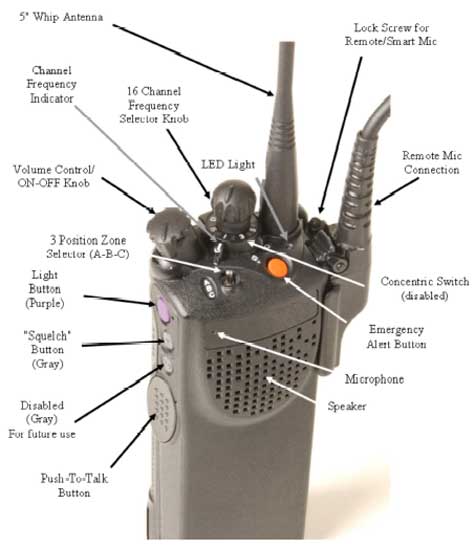|
P25 ISSI
{{no footnotes, date=March 2015 The Project 25 Inter RF Subsystem Interface ( P25 ISSI) is a non-proprietary interface that enables RF subsystems (RFSSs) built by different manufacturers to be connected together into wide area networks so that users on different networks can talk with each other. The wide area network connections using the ISSI provide an extended coverage area for subscriber units (SUs) that are roaming. The extended coverage area is important for public safety first responders that provide assistance in other jurisdictions during an emergency. The ISSI supports the messaging, and procedures necessary to enable RFSSs to track and locate SUs, set up and teardown calls and transfer voice information to the SUs. The ISSI uses SIP and RTP protocols (standardized protocols) to provide the messaging between RFSSs. The modern Land Mobile Radio (LMR) system includes many features in addition to voice communication. Many features will not work across systems connecte ... [...More Info...] [...Related Items...] OR: [Wikipedia] [Google] [Baidu] |
Project 25
Project 25 (P25 or APCO-25) is a suite of standards for interoperable digital two-way radio products. P25 was developed by public safety professionals in North America and has gained acceptance for public safety, security, public service, and commercial applications worldwide. P25 radios are a direct replacement for analog UHF (typically FM) radios, but add the ability to transfer data as well as voice, allowing for more natural implementations of encryption and text messaging. P25 radios are commonly implemented by dispatch organizations, such as police, fire, ambulance and emergency rescue service, using vehicle-mounted radios combined with repeaters and handheld walkie-talkie use. Starting around 2012, products became available with the newer phase 2 modulation protocol, the older protocol known as P25 became P25 phase 1. P25 phase 2 products use the more advanced AMBE2+ vocoder, which allows audio to pass through a more compressed bitstream and provides two TDMA voice ch ... [...More Info...] [...Related Items...] OR: [Wikipedia] [Google] [Baidu] |
Session Initiation Protocol
The Session Initiation Protocol (SIP) is a signaling protocol used for initiating, maintaining, and terminating communication sessions that include voice, video and messaging applications. SIP is used in Internet telephony, in private IP telephone systems, as well as mobile phone calling over LTE (VoLTE). The protocol defines the specific format of messages exchanged and the sequence of communications for cooperation of the participants. SIP is a text-based protocol, incorporating many elements of the Hypertext Transfer Protocol (HTTP) and the Simple Mail Transfer Protocol (SMTP). A call established with SIP may consist of multiple media streams, but no separate streams are required for applications, such as text messaging, that exchange data as payload in the SIP message. SIP works in conjunction with several other protocols that specify and carry the session media. Most commonly, media type and parameter negotiation and media setup are performed with the Session Description ... [...More Info...] [...Related Items...] OR: [Wikipedia] [Google] [Baidu] |
Real-time Transport Protocol
The Real-time Transport Protocol (RTP) is a network protocol for delivering audio and video over IP networks. RTP is used in communication and entertainment systems that involve streaming media, such as telephony, video teleconference applications including WebRTC, television services and web-based push-to-talk features. RTP typically runs over User Datagram Protocol (UDP). RTP is used in conjunction with the RTP Control Protocol (RTCP). While RTP carries the media streams (e.g., audio and video), RTCP is used to monitor transmission statistics and quality of service (QoS) and aids synchronization of multiple streams. RTP is one of the technical foundations of Voice over IP and in this context is often used in conjunction with a signaling protocol such as the Session Initiation Protocol (SIP) which establishes connections across the network. RTP was developed by the Audio-Video Transport Working Group of the Internet Engineering Task Force (IETF) and first published in 1996 a ... [...More Info...] [...Related Items...] OR: [Wikipedia] [Google] [Baidu] |
Project 25
Project 25 (P25 or APCO-25) is a suite of standards for interoperable digital two-way radio products. P25 was developed by public safety professionals in North America and has gained acceptance for public safety, security, public service, and commercial applications worldwide. P25 radios are a direct replacement for analog UHF (typically FM) radios, but add the ability to transfer data as well as voice, allowing for more natural implementations of encryption and text messaging. P25 radios are commonly implemented by dispatch organizations, such as police, fire, ambulance and emergency rescue service, using vehicle-mounted radios combined with repeaters and handheld walkie-talkie use. Starting around 2012, products became available with the newer phase 2 modulation protocol, the older protocol known as P25 became P25 phase 1. P25 phase 2 products use the more advanced AMBE2+ vocoder, which allows audio to pass through a more compressed bitstream and provides two TDMA voice ch ... [...More Info...] [...Related Items...] OR: [Wikipedia] [Google] [Baidu] |
Networking Hardware
Networking hardware, also known as network equipment or computer networking devices, are electronic devices which are required for communication and interaction between devices on a computer network. Specifically, they mediate data transmission in a computer network.IEEE 802.3-2012 Clause 9.1 Units which are the last receiver or generate data are called hosts, end systems or data terminal equipment. Range Networking devices includes a broad range of equipment which can be classified as core network components which interconnect other network components, hybrid components which can be found in the core or border of a network and hardware or software components which typically sit on the connection point of different networks. The most common kind of networking hardware today is a copper-based Ethernet adapter which is a standard inclusion on most modern computer systems. Wireless networking has become increasingly popular, especially for portable and handheld devices. Other netwo ... [...More Info...] [...Related Items...] OR: [Wikipedia] [Google] [Baidu] |

